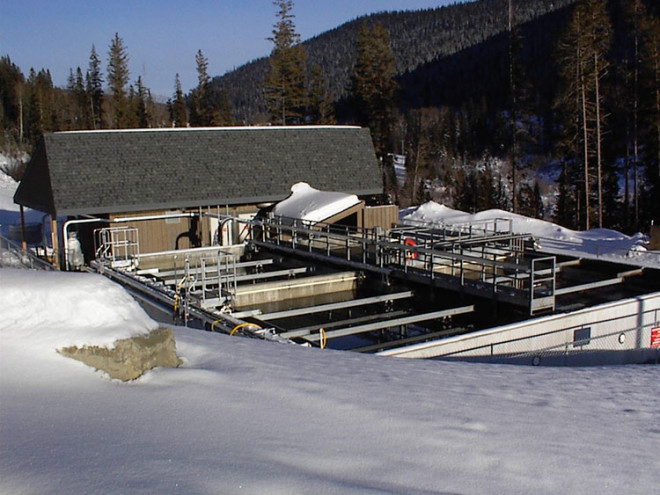Project: Ski Resort
Location: British Columbia
Size: 1,500 m3/d (400,000 gpd)
Contract: Design-Supply-Install
Key objectives: cold weather operation; highly fluctuating flow and loading; modular and expandable
After evaluating a few alternatives in the late nineties, Sun Peaks Resort selected the USBF® process, and in July 1999 awarded the initial phase design-build contract. The plant had to be flexible and allow for flows that dramatically change season to season and weekdays to weekends. Additionally, it had to be modular and expandable to allow for the resort and the population growth. Construction began in August, and the plant started receiving wastewater in November 1999. The resort’s growth has required a number of upgrades and expansions since, including additional bioreactors installed in 2003 and 2008.
The highly variable seasonal and weekly flows are only the beginning of the challenges. In winter, day skiers add a lot of ammonia to the wastewater stream resulting in the fast drop in alkalinity during the treatment process, high FOG and COD are encountered due to the type of cooking oils and cleaning detergents used in the resort’s restaurants and hotels, and very high peak hourly flows, and the fact that the influent temperature may drastically change within a matter of days, complete the picture.
The permitted effluent parameters are at 30 mg/L each for BOD5 and TSS, not very demanding and the plant delivers much better. BOD5 is typically less than 10 mg/L, TSS from 5 to 20 mg/L, ammonia less than 1 mg/L and Total Nitrogen in the 10 to 20 mg/L range. When the supernatant from the sludge dewatering process is not returned back into the influent, the Total Phosphorus is biologically reduced to 2 to 3 mg/L.


